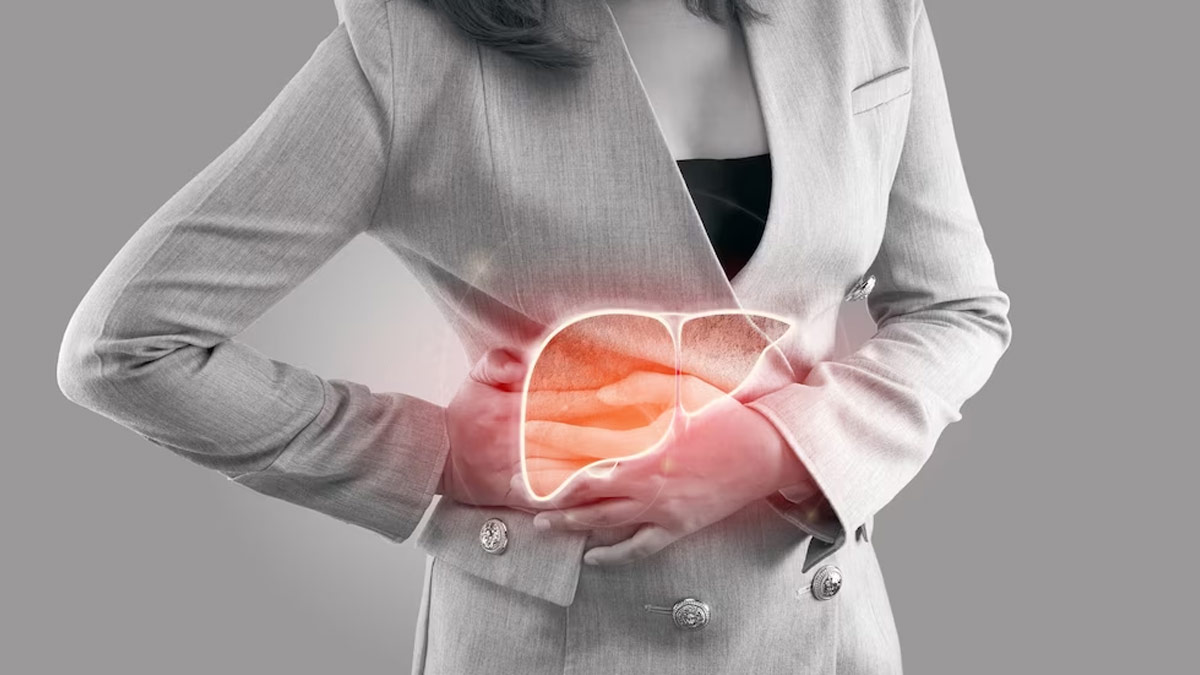
Liver is the largest internal organ in the body, which is responsible for several functions. It supports metabolism, boosts immunity, improves digestion, helps in detoxification, and also facilitates vitamin storage. However, many factors, including heavy alcohol use, smoking, fatty diet, obesity, pre-existing type 2 diabetes, or viral infections like hepatitis, can impact the organ negatively. Continuous strain on the liver can lead to liver damage and scarring, causing potential threat to life. This is also called liver cirrhosis.
Table of Content:-
Speaking with the OnlyMyHealth team, Dr Kavya Dendukuri, Senior Hepatologist, Kamineni Hospitals, L.B Nagar, discussed the many aspects of the disease and shared the warning signs.
Also Read: Your Legs Can Signal A Fatty Liver Disease: Note THIS Warning Sign
Understanding Liver Scarring And Its Potential Dangers

Cirrhosis of the liver can lead to permanent scarring or damage of the liver.
Usually, the liver has a potential to regenerate, Dr Dendukuri shared, explaining, "Even if there is some amount of damage and if some of the liver cells tend to die during the early stages, it is reversible."
However, over a period of time when liver has an insult or the liver becomes fatty and fibrosed, it fails to regenerate and reaches an irreversible stage.
According to the Cleveland Clinic, this is a result of long-term, chronic hepatitis characterised by inflammation in the liver, triggered by several causes.
When the liver becomes scarred, it blocks the flow of blood and oxygen through your liver tissues, which in turn slows the liver's ability to process blood, metabolise nutrients, and filter out toxins, the health website explains.
Additionally, liver scarring can also impact the blood vessels running through the liver, including the portal vein system. This can lead to a condition called portal hypertension, wherein the blood pressure in the portal veins, which drains the blood from the gastrointestinal tract, gallbladder, pancreas, and spleen to the liver, rises. The extra pressure from the increased blood flow can expand and weaken the veins, making fluids leak into the abdomen.
Compensated Vs. Decompensated Cirrhosis

Liver cirrhosis is usually categorised into two parts namely compensated and decompensated cirrhosis.
Compensated liver cirrhosis is when you do not experience any symptoms of the disease, whereas decompensated symptoms are associated with cirrhosis that has progressed so much that the liver is unable to function and you start to develop symptoms.
According to Dr Dendukuri, people with compensated cirrhosis have a possible life expectancy up to 7-9 years, as per study. However, for those who have developed complications and have decompensated cirrhosis, the life expectancy can be as low as 2-7 years, the only mode of treatment being liver transplantation.
Also Read: Excessive Alcohol Consumption Can Contribute To Stroke Risk: Step-By-Step Strategies To Stop Drinking
Warning Signs That Need Urgent Attention
Common symptoms of liver cirrhosis include:
- Fatigue and weakness
- Loss of appetite and weight loss
- Nausea and vomiting
- Abdominal pain and swelling
- Jaundice (yellowing of the skin and eyes)
- Itchy skin
- Easy bruising and bleeding
- Spider veins on the skin
In addition, since portal hypertension is a common health complication associated with liver cirrhosis, other symptoms that should be taken seriously include:
- Black, tarry, and bloody stool
- Vomiting of blood
- Ascites or accumulation of fluid in the abdomen
- Confusion and forgetfulness caused by poor liver function
- Reduced levels of platelets
How To Reduce The Burden On Liver After Cirrhosis

While liver cirrhosis is an irreversible condition, there are ways to reduce further strain on the organ. Here are certain measures to take:
- Steer clear of oily, deep fried, extremely sugary, and salty foods
- Increase protein intake through vegetarian foods like sprouts, channa, rajma, paneer, soya, lentils, and non-vegetarian foods like chicken, fish, and egg white
- Cut down on the consumption of red meat such as mutton, beef, and pork
- Indulge in physical activity, such as walking
- Avoid alcohol consumption and quit smoking
Bottomline
Liver cirrhosis is a life-threatening disease. However, it can be prevented as the diseases that most commonly lead to it progress slowly and the lifestyle factors that contribute to it can be managed effectively. In case liver cirrhosis has already occurred, it may be difficult to reverse it. However, one must ensure managing the condition and reducing the burden through healthy practices like eating nutrient-dense, liver-friendly foods and exercising regularly to maintain a healthy weight.
Also watch this video
How we keep this article up to date:
We work with experts and keep a close eye on the latest in health and wellness. Whenever there is a new research or helpful information, we update our articles with accurate and useful advice.
Current Version